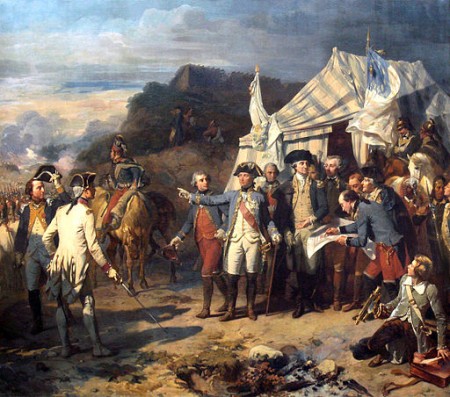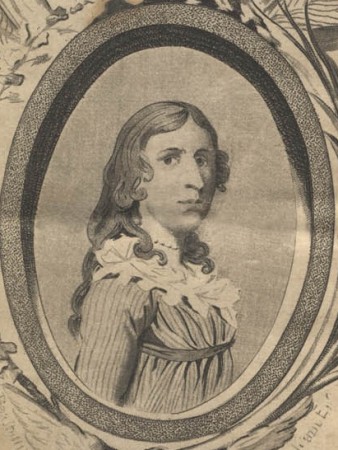
Battle of Yorktown
In the spring of 1782, Robert Shurtlieff (b. 1760) enlisted in the Continental Army during the American Revolution, joining the Light Infantry Company of the 4th Massachusetts Regiment, based in Westchester, New York. About a year prior, on October 19, 1781, the British General, Lord Cornwallis, had surrendered to General Washington. Although this was the last major battle of the Revolution, the war was not quite over.
In June of 1782, Shurtlieff and two sergeants led about 30 other infantrymen on an expedition and clashed with a band of Tories. During this encounter, Shurtlieff was gashed on the forehead by a sword, and was shot in the left thigh just below the groin.
Shurtlieff didn’t want anyone to know about the thigh wound, because Robert Shurtlieff was a woman.
Robert Shurtlieff’s real name was Deborah Sampson. She’d passed as a man by binding her chest. She was also about 5’7, as tall as the average man, and her lack of a beard didn’t set her apart from the many young boys that had enlisted.

Deborah Sampson
She was able to conceal the thigh wound from the doctors, and extracted the pistol ball herself, using rum to clean the wound and digging it out with a knife and a sewing needle. (Fun times.) But because no one knew of that injury, she had to return to combat before it was completely healed. Antibiotics were, of course, nonexistent, and sanitary conditions were most certainly dismal. She probably knew she was in serious peril–soldiers who sustained similar injuries frequently died of sepsis or shock.
Soon thereafter she contracted a serious bout of fever, and lost consciousness. A doctor who was attempting to determine if she was alive and breathing unwound her bound-up chest and discovered her secret.
She recovered from the fever and received an honorable discharge in 1783. She later married and had three children.